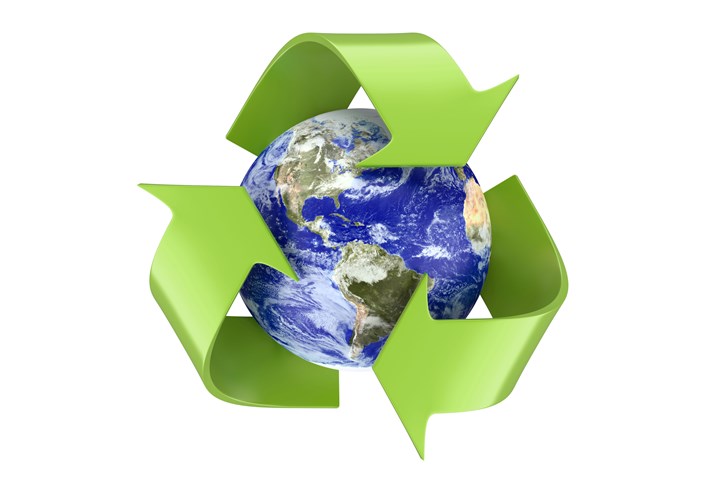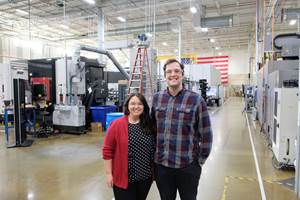What’s Your Sustainability Plan?
If you don’t have one, you should think about it. There are many ways beyond using recycled materials that a processor can make its facility more planet-friendly.

It was about 10 years ago; maybe 15 … time flies by so fast. I was having dinner with a sales executive from an injection molding machine builder in Leominster, Mass. It was during the since-shuttered MassPlastics show in Fitchburg, Mass. The was a new buzzword that was making the rounds in plastics circles, and we were talking about it.
This particular sales exec is a colorful fellow not shy about expressing opinions. “Sustainability is a big issue our industry is going to be dealing with for years to come,” he told me. “You wait and see.”
I was dubious. Actually, I thought he was flat-out wrong. “It’s the flavor of the month,” I replied, “and as sure as I’m sitting here, we’ll be talking about something else next time we have dinner.”
Well, I whiffed on that one. And that’s a good thing, because it means our industry is taking steps in its manufacturing operations to be as efficient and resource-friendly as possible. That was one of the many takeaways I had after visiting Pregis Performance Flexible’s spanking-new plant in Anderson, S.C. (see cover story, p. 38). All too often, I think we equate sustainability with recycling. In fact, sustainability is the destination, and recycling is one of the many paths to get there.
Pregis left no stone unturned in designing this plant with sustainability at the forefront. The plant in Anderson complies with LEED (Leadership in Energy and Environmental Design) standards for all appropriate materials. Building materials were specifically selected to cut down on environmental impact of maintenance and upkeep. The plant was built with water- and power-conserving measures; there are skylights and bright reflective paint to reduce dependence on artificial light sources. No single-use water bottles are provided at the plant.
Measures were also taken to equip the plant with energy-efficient lighting and equipment, automated HVAC and auto-shutdowns for electronics, and other conservation best practices. They ship products to customers without pallets.
On Pregis’ website, it refers to its sustainability program, which is calls 2K30. “Sustainability is more than the products and materials we use. It’s a value system that impacts everything we do. At Pregis, we don’t just reduce, reuse and recycle—we use our position to lead the way to a circular economy that puts people and the planet first. Our journey to 2K30 is our part to protect and preserve our planet for generations to come, and we invite all of our partners, customers, and distributors to take it with us.”
The company put ambitious goals in place that it aims to achieve by 2030. These include reducing greenhouse-gas emissions by 25%; making 100% of its products recyclable, reusable, or with a minimum 30% reduction in new fossil-based ingredients; achieving 100% product and process waste reduction at its facilities globally; and investing $15 million in circular, scalable, and sustainable material, process, and waste solutions globally.
Now Pregis is a large packaging company that participates in many markets with plants all over the world. Likely you’re thinking all big companies with lots of plants have the time and resources to do this. But regardless of how many plants and 911±¬ÁĎÍř units a company has, the reality is that plans like this have to be executed one facility at a time. So if you have one plant, or two or three, you can do it too. At the end of the day, it all matters.
Related Content
Plastics Technology Year in Review: Your Favorite Reads of 2024
A year-end review of the top stories showcasing industry trends, advancements and expert insights. Revisit the articles that captured the attention of the plastics community.
Read MoreScaling Up Sustainable Solutions for Fiber Reinforced Composite Materials
Oak Ridge National Laboratory's Sustainable Manufacturing Technologies Group helps industrial partners tackle the sustainability challenges presented by fiber-reinforced composite materials.
Read MoreShredding Thin Film: How to Do It Right
While many processors recoil at this task, a little know-how in shredding equipment, processing, and maintenance should add the necessary confidence.
Read MoreThe Importance of Mass Balance in Chemical Recycling
Approaches to mass balance can dramatically impact calculations of recycled content.
Read MoreRead Next
See Recyclers Close the Loop on Trade Show Production Scrap at NPE2024
A collaboration between show organizer PLASTICS, recycler CPR and size reduction experts WEIMA and Conair recovered and recycled all production scrap at NPE2024.
Read MoreMaking the Circular Economy a Reality
Driven by brand owner demands and new worldwide legislation, the entire supply chain is working toward the shift to circularity, with some evidence the circular economy has already begun.
Read MoreFor PLASTICS' CEO Seaholm, NPE to Shine Light on Sustainability Successes
With advocacy, communication and sustainability as three main pillars, Seaholm leads a trade association to NPE that ‘is more active today than we have ever been.’
Read More













